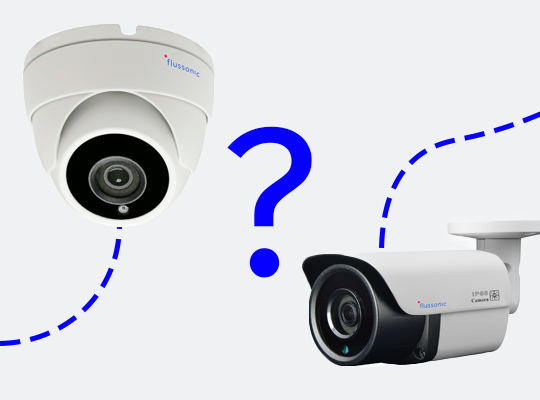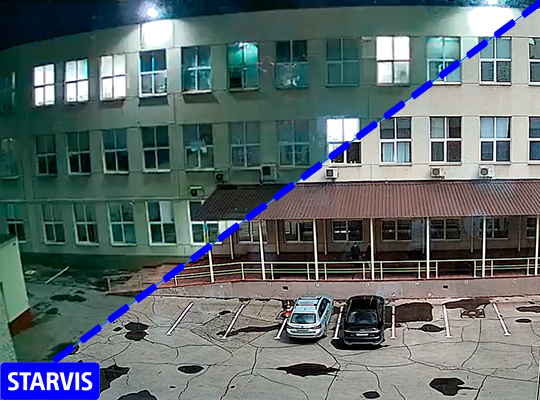You might have seen the words Ingress Protection or simply Protection followed by abbreviation IP and two numbers while looking through camera data sheets. What does it mean and what does it have to do with your cameras? Let’s try to figure it out.
What is ingress protection?
In this case, IP does not stand for Internet Protocol as in “IP camera”, but it means Ingress Protection, i.e. how much a device is sealed enough to prevent external media from penetration into enclosure. This code is assigned as guided by IEC 60529 (or corresponding national standards including DIN40050-9 in Germany, GOST 14254-96 and GOST 14254 in CIS, etc.)
You don’t have to thoroughly study those standards to find out what an IP code means. Any source on the Internet immediately answers this question: first number 0 to 6 is the degree of protection against solid foreign objects and dust while the second number 0 to 9 stands for protection from liquids, including pressurized water. The higher the number, the stronger the protection. There also may be additional letters in the code giving even more insight into the device protection capabilities; you may find the details in Wikipedia. So the maximum possible code is IP69K: it means that the case fully protects the insides of the device from the smallest dust and hot water under pressure. In relation to cameras, this may mean, for example, that you can install the device on the outside of your vehicle which you are planning to clean at the car wash every day or week.
The protection class indicated in the camera’s data sheet means that the manufacturer has completed standard tests and proved that the camera body protects the “stuffing” from the corresponding environmental factors.
Ingress Protection code breakdown
This table shows what each digit or part of the IP code represents.
| Code letters | First characteristic numeral: Solid particle protection | Second digit: Liquid ingress protection | Additional letter: Other protections | Supplementary letter: Other protections |
|---|---|---|---|---|
| IP (Ingress Protection) | Single numeral: 0–6 or letter X | Single numeral: 0–8 or letter X | Single letter | Single letter |
| Mandatory | Mandatory | Mandatory | Optional | Optional |
Which IP code is good for an IP-camera?
When choosing a camera, the degree of protection is determined by the planned installation location. You should think of conditions in that place where the camera will be mounted, specifically which environment it is going to be exposed to. Keep in mind that the ingress protection may influence the casing cost: the higher the protection, the more expensive the camera is. There is no point in overbuying IP69K if you are installing cameras indoors while it should not surprise you if an IP42 camera does not work in the pouring rain. Let’s figure out how to choose the right degree of dust and moisture protection for your needs.
In-home

When buying a camera for your home, you don’t have to think about the protection class at all: even IP42 will be enough if the camera stays put on your desk where only a spilled cup of coffee threatens it in the worst case.
Our Flussonic Home cameras provide IP54 protection class which means that the casing prevents dust and liquid splashes from penetration inside the camera. IP54 makes the camera reliable and durable while expanding the scope of its application from just in-home conditions to more difficult environments like a vehicle cabin or even a light production site (but not outdoor).
Outdoor

More serious IP degrees come into picture if you are going to mount the camera on an outside wall of a building or in the middle of nowhere. The camera enclosure must provide full protection against dust and water jets, i.e. a class of at least IP65.
The most common outdoor cameras on the market are IP66, completely dustproof and protected from powerful water jets. This is more than enough for any IP camera, of course, if your plan is not to install it on the bottom of your swimming pool.
The IP67 protection class is already somewhat redundant for IP cameras, since it allows cameras to be immersed in water to a depth of 1 meter for up to 30 minutes. However, it’s hard to imagine a situation where this might be needed; if such a situation occurs, the camera integrity will most likely be the last of your problems. So when you choose between IP67 and IP66 outdoor cameras, it is better to give preference to IP66 for money-saving reason.
Our Flussonic Bullet cameras have the necessary and sufficient protection class IP66. This means that they can be installed outdoors in pouring rain, and they will work fine even if the water from the roof is flowing directly onto the cameras. Flussonic Dome cameras are even more protected with IP67 class so they can even be immersed in water for a short time.
Hazardous environment

It is worth noting that if you plan to install cameras in a hazardous environment like a production or mining site, then you mostly need to consider other characteristics in addition to the IP code such as explosion proofing, housing material, etc. There are special cameras for such conditions that a priori have a class of at least IP67, so the choice is made according to additional criteria that are not related to the topic of this article. If you are looking for such a camera, please contact specialized vendors.
As a conclusion
To summarize, remember that more is better than less when choosing an IP class. You can never have too much protection but still there is a line where you should stop since a high class of protection increases the cost of the camera.




